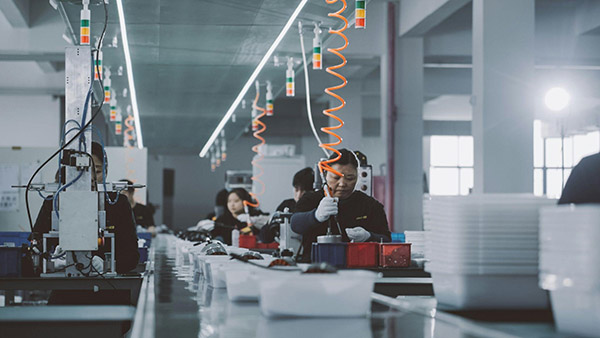- The product development process starts with ideation, where initial ideas are refined through research and concept development.
- A well-planned design phase focuses on both the look and functionality of the product, ensuring it aligns with market demands.
- Prototyping and testing are crucial for refining the product before moving to full-scale production, allowing for necessary adjustments.
- Quality control and efficient distribution ensure the product reaches the market successfully and meets customer expectations.
Turning a great idea into a tangible product can seem daunting, but it’s an exciting journey when you know the steps. Whether you’re an entrepreneur looking to break into the market or a business wanting to expand its offerings, understanding the product development process is crucial. From brainstorming initial concepts to seeing the final product come to life, each phase is a key part of the journey.
In this guide, we’ll walk through the steps from ideation to production, showing how you can bring your vision to life while ensuring your product meets market demands and stands out from competitors.
Ideation and Concept Development
Every successful product starts with a strong idea, but that’s just the beginning. The ideation phase is where your creativity flows freely, but it’s also where initial decisions are made that will shape the entire process. Start by brainstorming concepts and considering the problem your product will solve. Ask yourself: What sets your idea apart? How will it benefit potential customers?
Once you’ve landed on a concept, it’s important to refine it. Market research plays a significant role here. By understanding the current market and competitors, you can identify gaps that your product can fill. This step helps you validate your idea and refine its features, ensuring it meets both consumer needs and business goals.
Sketches or early mockups are another helpful tool at this stage. These visual representations make your ideas more tangible and help communicate your vision more clearly to stakeholders or partners who might be involved in the later stages of development.
Designing Your Product
Once you have a solid concept, the next step is to bring it to life through design. This is where your idea takes shape, evolving from a simple sketch into a detailed blueprint. The design phase focuses on both functionality and aesthetics—how the product will look and how it will perform in the real world.
Choosing the right materials is crucial at this stage. The type of materials you select can affect everything from the durability and cost of the product to how it resonates with your target audience. Additionally, design decisions around size, weight, and usability are made here. It’s essential to think about how the product will be used and ensure the design aligns with that vision.
Partnering with professionals during this phase can make a significant difference. When working with a manufacturer for custom product manufacturing, expert input ensures that the final product is not only visually appealing but also practical to produce. This collaboration helps avoid costly mistakes down the road and ensures your product is ready for the next stage: prototyping.
Prototyping and Testing
Prototyping is where your design becomes a physical reality. It’s an exciting phase, as you finally get to see and hold a version of your product. However, it’s also a critical step for testing the functionality, durability, and overall feasibility of the design.
Prototypes serve as a working model that allows you to make adjustments before moving to full-scale production. You may discover that certain materials don’t work as planned or that minor tweaks can improve performance or reduce costs. This stage is all about refinement and making sure the product meets your standards.
Testing is just as important as prototyping. Depending on the product, this could involve stress testing for durability, user testing for ease of use, or even environmental testing if the product will face extreme conditions. Feedback during testing helps iron out any flaws and ensures the final product is ready for market success.
Manufacturing and Production
Once your prototype has been perfected, it’s time to move on to full-scale manufacturing. This phase transforms your product from a single prototype into multiple units ready for sale. Choosing the right manufacturing partner is crucial, as their expertise and capabilities will significantly impact the quality and efficiency of production.
One of the biggest decisions you’ll make here is selecting a manufacturer that aligns with your specific needs. Factors such as production volume, material capabilities, and turnaround time all come into play. If you’re developing a highly specialized or unique product, working with a manufacturer who offers customized solutions can be a game changer. They will have the expertise to bring your vision to life while ensuring your product is produced at the highest quality.
It’s also essential to maintain clear communication with your manufacturer throughout the process. This ensures that any adjustments can be made swiftly and that the final product meets all specifications and standards before heading to market.
Quality Control and Distribution
With production in full swing, quality control becomes the top priority. This stage ensures that every product coming off the line meets your standards for performance, durability, and appearance. Regular inspections, testing, and quality checks throughout production help catch any potential issues before they reach the customer.
A robust quality control process not only protects your brand’s reputation but also saves time and resources by preventing returns or defective products from reaching the market. Ensuring your product is perfect at the point of production makes the distribution process smoother and more efficient.
Finally, the logistics of packaging and distribution wrap up the product development process. Here, you’ll coordinate shipping, packaging design, and delivery to get your product into the hands of customers. Whether you’re distributing on a large scale or starting with smaller quantities, a solid distribution plan ensures your product reaches its target market successfully and in great condition.
Conclusion
Taking a product from concept to creation is an intricate journey that requires careful planning, design, and execution. Each phase—from ideation and prototyping to full-scale manufacturing—plays a crucial role in ensuring the final product meets both market needs and your business goals. By following this guide, you can confidently navigate the process and avoid common pitfalls along the way.
Custom solutions offer unique advantages, allowing you to create a product that stands out in a competitive market. Whether you’re launching a new product or improving an existing one, partnering with the right experts and manufacturers will help you bring your vision to life efficiently and successfully.



